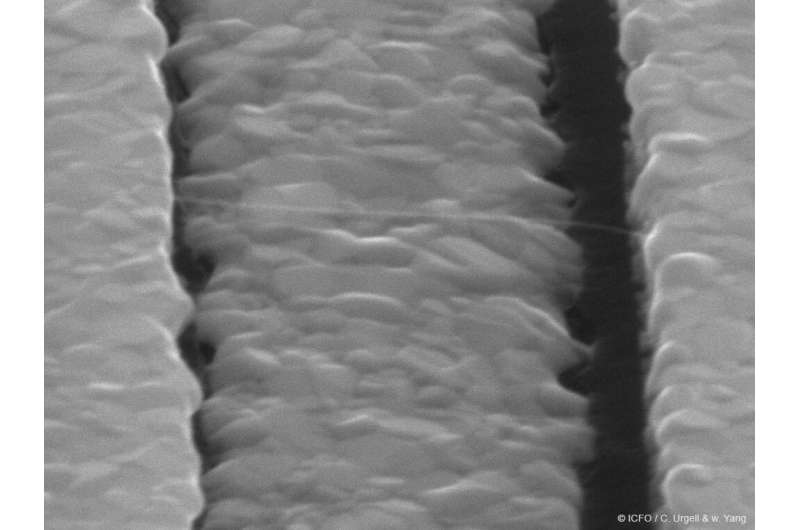Cooling nanotube resonators with electrons

Mechanical resonators have been used with great success as new resources in quantum technology. Carbon nanotube mechanical resonators have shown to be excellent ultra-high sensitive devices for the study of new physical phenomena at the nanoscale level (e.g. spin physics, quantum electron transport, surface science, and light-matter interaction).
Mechanical resonators are often used to observe and manipulate the quantum states of the motion of relatively large systems. However, the drawback lies in the thermal noise force, which, if not controlled properly, ends up diluting any possibility of observing the quantum effects. Thus, scientists have been seeking effective methods to cool down these systems to the quantum regime and be able to observe quantum effects on demand. One of these approaches has been to use the transport of electrons along the resonator to cool down the system.
Many theoretical schemes have been proposed to cool these mechanical resonators using different electron transport regimes, but experimental difficulties have made it extremely challenging in terms of device fabrication and measurement. Despite many efforts, only one experimental realization of cooling was reported over a decade ago, in which researchers were able to cool down the system to a population number of 200 quanta, which is far from the quantum regime.
Now, in a new study published in Nature Physics, ICFO researchers Carles Urgell, Wei Yang, Sergio Lucio de Bonis, and Chandan Samanta, led by ICFO Prof. Adrian Bachtold, in collaboration with researchers from ICN2 in Barcelona and CNRS in France, have been able to demonstrate an experiment in which they cool down a nanomechanical resonator to 4.6 +- 2.0 quanta of vibration.
In their study, the team fabricated the resonator by growing a carbon nanotube between two electrodes, where in the last step of the fabrication process, they employed a chemical vapor deposition method to minimize any possible residual contaminant on the device. Then they inserted the system in a dilution refrigerator and cooled it down to 70 mK. The novelty of their technique lay in applying a constant current of electrons through the resonator. When a constant current was applied to the resonator, the electrostatic force of the electrons impacts the dynamics of the vibrations. These modified vibrations react back on the electrons, making a closed loop with a finite delay. This back-action of the electrons on the vibrations can be used to amplify or reduce the thermal vibration fluctuations. In the latter case, they used it to cool down the system to reduce the thermal displacement fluctuations, allowing them to approach the quantum regime limit mentioned before, with a population number never before seen when compared to previous work.
The results of the study have confirmed this method to be an excellent and very simple way to cool down nanomechanical resonators, which could be of utmost importance to scientists working in nanomechanics and quantum electron transport since it will become a powerful resource for quantum manipulation of mechanical resonators.
More information: C. Urgell et al, Cooling and self-oscillation in a nanotube electromechanical resonator, Nature Physics (2019). DOI: 10.1038/s41567-019-0682-6
Journal information: Nature Physics
Provided by ICFO




















